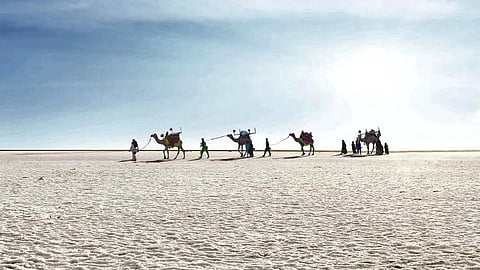270 km from Ahmedabad: 3,000-YO shorebird footprints uncovered in Kutch hint at dried-up water body
A remarkable discovery by a team of geologists has provided fresh insights into the ancient landscape of Kutch, 270 km from Ahmedabad. Fossilised bird footprints, estimated to be around 3,000 years old, have been found near the Allah Bund uplift, suggesting that this now-arid region once supported a water body.
Footprints of shorebirds from the Late Holocene period
The geologists, who were conducting research near the India-Pakistan border to study geological shifts, stumbled upon the footprints in the Karim Shahi area last year. What made the find particularly intriguing was that the prints were buried under layers of sediment, with the closest water source currently situated nearly 20 kilometres away.
Further analysis confirmed that these impressions belonged to shorebirds from the Late Holocene period. This finding indicates that low tidal waters existed in the area thousands of years ago, shedding new light on the region’s environmental history and geological evolution.
The discovery has been documented in "Scientific Reports", a journal under the prestigious "Nature" publication. The research paper, titled "Discovery of Fossil Avian Footprints from Late Holocene Sediments of Allah Bund Uplift in the Great Rann of Kachchh, Western India," was authored by Darshit Padia, Bhawanisingh Desai, Suruchi Chauhan, and Babulal Vaghela.
To get all the latest content, download our mobile application. Available for both iOS & Android devices.

